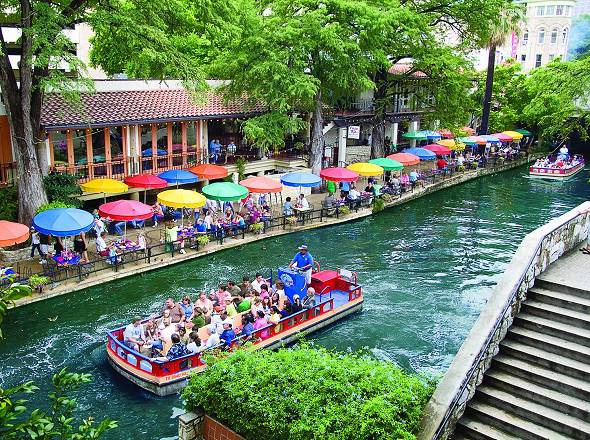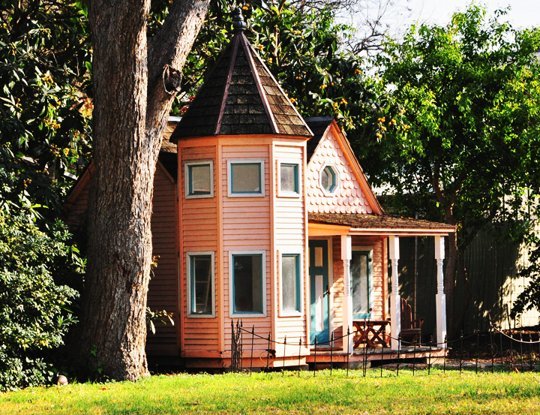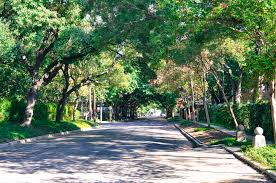When we were raising our family, I didn’t travel much, and when we did, it was to kid-friendly locations that usually had a beach involved. Not sure why we went to beaches, since we live in southern California, although the California current is cold and tropical beaches are much more appealing.
In planning the Churchill trip, I thought a lot about traveling, and more particularly how I like to travel. In particular, I thought back to a time about 20 years ago when I spent a week in San Antonio, Texas attending depositions. I had passed through San Antonio in high school, visited the Alamo, and did the usual tourist stuff. I arrived late on a Sunday evening after flying through a whole series of West Texas thunderstorms, and started to explore the city on foot.
San Antonio is extraordinarily clean, The city hasn’t razed its older buildings, so the center is not a ghost town after 5 pm, although, as I discovered, people do go to bed early and there is nobody—and I mean nobody—on the streets after 10 pm.
In a single evening’s ramble of perhaps an hour, I discovered that the city had three official languages (English, Spanish, and German) until the 1890’s and had a lot of distinguished older buildings, including a Richardson-romanesque courthouse (county of Bexar):
It also had the first office building to be air conditioned (1928, by Carrier Corporation):
San Antonio is also famous for its Riverwalk, which everybody raves about. A portion of the San Antonio River has been shunted into a canal and traverses a commercial development oriented toward pedestrians for about 5 blocks. It’s Disneyland-in-Texas and so bland that you could be anywhere. You certainly get no sense of what it’s like to live in San Antonio:
After spending one miserable evening eating at some establishment that could have been in any city in the US, I struck out to find the real river which, happily, flowed by my hotel. I avoided the detour into the Riverwalk and discovered plenty of San Antonio residents biking, walking, and generally enjoying the summer evening (if not the mosquitoes). After walking about a kilometer to the south along the river, however, I discovered the real treasure of my visit: King Wilhelmsland.
Yes, indeed: this had been the German area of town in the 1870’s and 1880’s, named after King Wilhelm I of the new German Reich (2nd Reich, for you history buffs), though it has sometimes been known in San Antonio as “Sauerkraut Bend.” (The district seems to be called the King William district by the city of San Antonio, but the plaque I discovered by the river said “King Wilhelmsland”.) The district was filled with restored Victorian homes. Some were substantial, like these two substantial places:
Others were more modest, but retained the color of the Victorian age:
The streets were tree-lined and extremely peaceful. Though this street had sidewalks, many didn’t:
There were even some modern houses that, oddly enough, fit in just fine, perhaps because of the respect for past styles. Here’s a nicely-executed example of what we’d call Streamline Moderne in Los Angeles, from the 1930’s, I imagine:
By exploring, I avoided another evening as a miserable consumer in a plastic paradise and instead had a transcendent experience that gave me some insight into what life might have been like for some people in San Antonio a hundred years before. The only regret I had was that I didn’t meet any of the residents to hear their stories, which is one of the most fun parts of travel.
You can’t make discoveries like King Wilhelmsland by going on tours or hanging around tourist attractions like the Riverwalk. The Internet has made it easier to find such districts (see this link, e.g.), but sometimes you just have to go and ramble. That’s what I do. I’m a slow walker (my wife is 9 inches shorter than I am and moves at least twice as fast) because I like to see what’s going on around me.
And so that’s what I’d like to show you for the next couple of days: a series of short posts with pictures about what I found in Winnipeg and how I found it. My method of exploration of a new place is extremely idiosyncratic, and I don’t recommend it as a guide for travel if you like a lot of predictability and structure. But if you like to see what’s there, you may find it informative.









